Just three miles from the Giza Pyramids lies a mysterious site known as Zawyet El Aryan, nicknamed Egypt‘s Area 51, sealed off by the military for decades.
Archaeologist Alessandro Barsanti first excavated the site in the early 1900s, uncovering a colossal T-shaped pit carved into solid limestone, nearly 100 feet deep and lined with massive granite blocks.
At the center of one chamber sits an oval vat with a fitted granite lid, which Barsanti reported contained traces of an unknown substance, now lost.
Many Egyptologists believe the site was intended as a pyramid that was never completed, though no superstructure was ever built above the pit.
The site’s true purpose remains a mystery, but graffiti discovered inside includes the word ‘Seba,’ interpreted by some researchers as the ancient Egyptian term for a ‘gateway to the stars.’
Independent researcher Derek Olsen discussed the mysterious structure on the Matt Beall Limitless podcast, suggesting this could indicate the structure was built as a vessel for cosmic travel or spiritual ascension.
The shaft and chambers’ dimensions and construction, massive granite floors, smooth limestone walls, and a sealed central vat have fueled speculation about advanced or ceremonial purposes.
The mystery deepened when the Egyptian military seized control of the site in the mid-1960s, blocking all modern excavations and tours and leaving Barsanti’s early photographs as the sole detailed record of the complex.
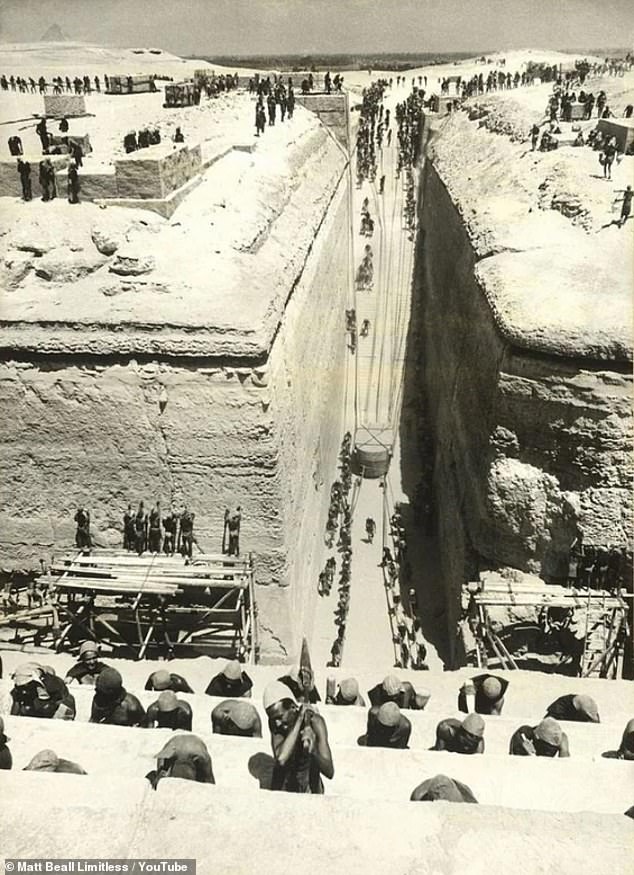
Archaeologist Alessandro Barsanti first excavated the site in the early 1900s, uncovering a colossal T-shaped pit carved into solid limestone, nearly 100 feet deep and lined with massive granite blocks
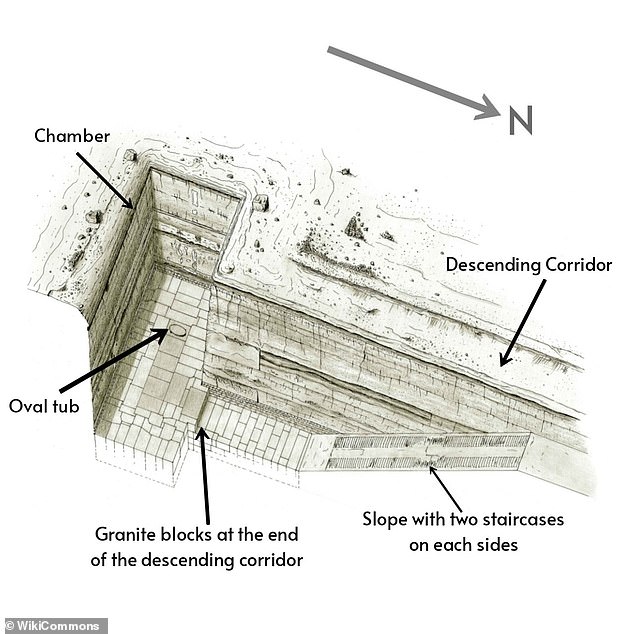
The Egyptian military took over the site in the 1960s, leading it to be called Egypt’s Area 51
During Barsanti’s original excavation, graffiti written in black and red ink was found on the walls, one inscription reading ‘Seba-[unknown]-Ka.’
While no one knows the full text or its meaning, it translates to ‘star’ and ‘vital essence’ or ‘life force.’
Olson believes it is the ancient Egyptian word for ‘gateway to the stars,’ suggesting the structure was built as a vessel for the ancient people to travel the cosmos.
However, mainstream scientists noted that it was likely the name of a builder or represented a figure of the time.
The T-shaped structure is carved directly into the natural bedrock, with walls that are smooth but were never covered with stones.
The chamber at the end of the shaft was never completed, and only the floor was finished and covered with massive granite blocks, each measuring approximately 15 feet long and 8 feet thick, weighing up to 18,000 pounds.
The exact purpose remains a mystery, with many Egyptologists believing the site was the beginning of an unfinished pyramid complex from the 3rd or 4th Dynasties.
While others think it served as an experimental foundation or ceremonial chamber that was never completed.
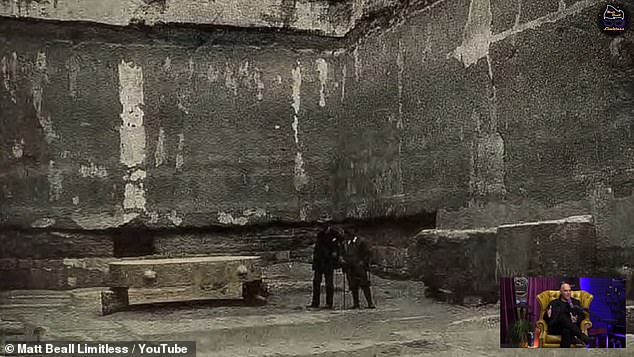
At the center of one chamber sits an oval vat with a fitted granite lid, which Barsanti reported contained traces of an unknown substance, now lost.

Egypt’s Area 51 was a recent topic on the Matt Beall Limitless podcast, which features guest Derek Olsen (left)
Olson explained that the massive granite blocks were moved to the site for the flooring.
‘Why would you need a 10-foot-tall granite block on the floor?’ Beall asked, to which Olson said: ‘Right, when it’s naturally limestone [on the ground].’
Olson added: ‘How they fashion that the limestone walls are mindboggling.’
Beall quickly jumped in, saying: ‘And why? What is the tub for? What would the original purpose of it be? Complete mystery, I guess, right?’
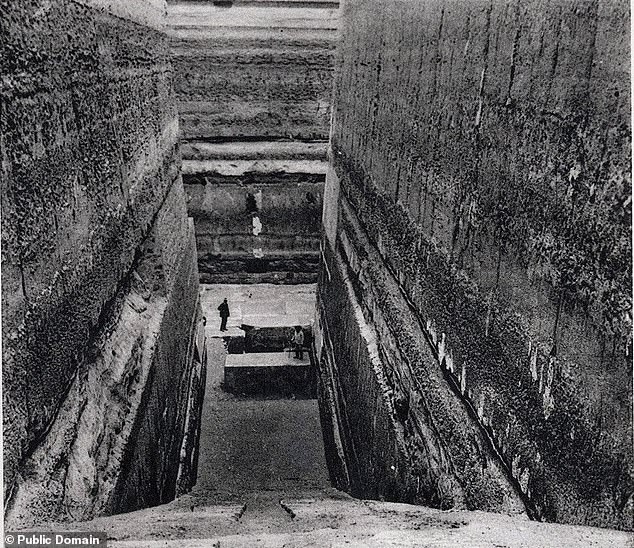
Archaeologist Alessandro Barsanti first excavated the site in the early 1900s, uncovering a colossal T-shaped pit carved into solid limestone, nearly 100 feet deep and lined with massive granite blocks. His photos are the only view people have of the site
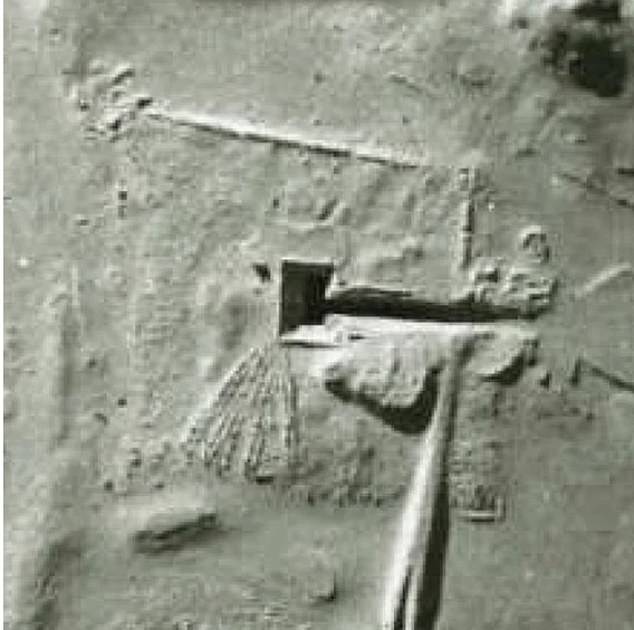
The site is about three miles from the Giza pyramids
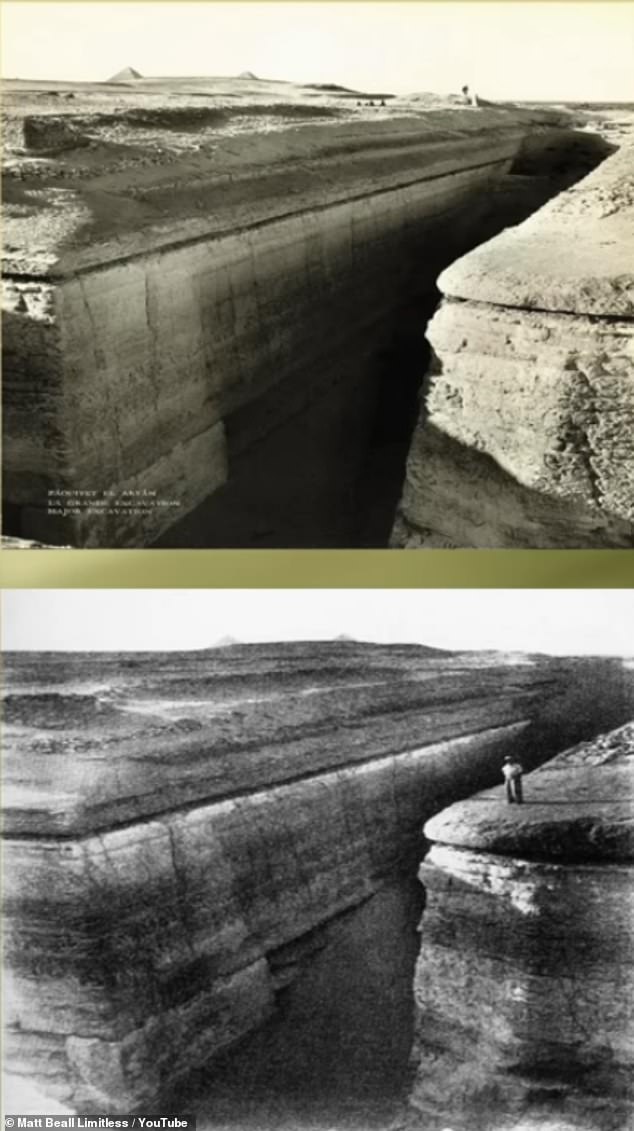
The T-shaped structure is carved directly into the natural bedrock, with walls that are smooth but were never covered with stones
The tub is approximately 10 feet long, 7 feet wide, and 5 feet deep.
It was found sealed with a granite lid, suggesting it was intended to be a closed container.
The archaeologists also claimed to have discovered a damaged dedication tablet bearing the name of King Djedefre, which could potentially link the pyramid to this Fourth Dynasty ruler.
However, this tablet’s authenticity and significance remain subjects of debate among scholars
Olson highlighted similar ancient Egyptian structures with granite boxes, including the Great Pyramid, the Serapeum and the Saqqara pyramid.
‘We are seeing a theme of this huge granite floor and a lid-like structure,’ he said.
